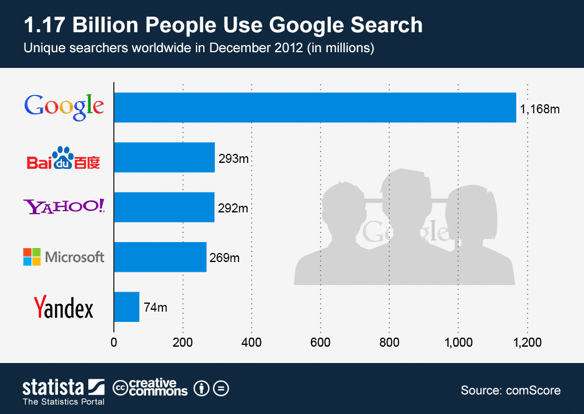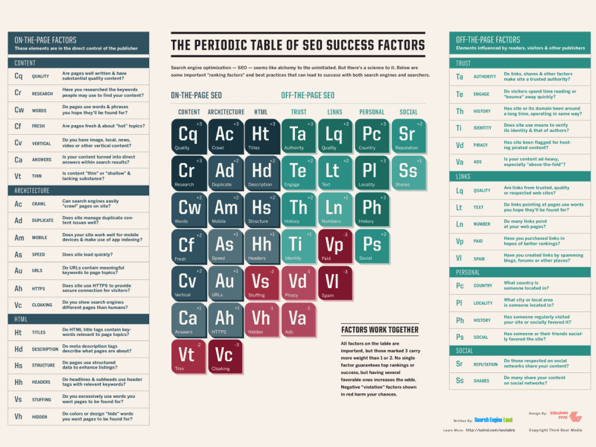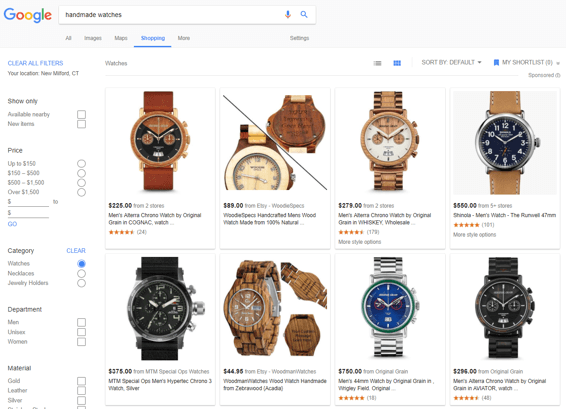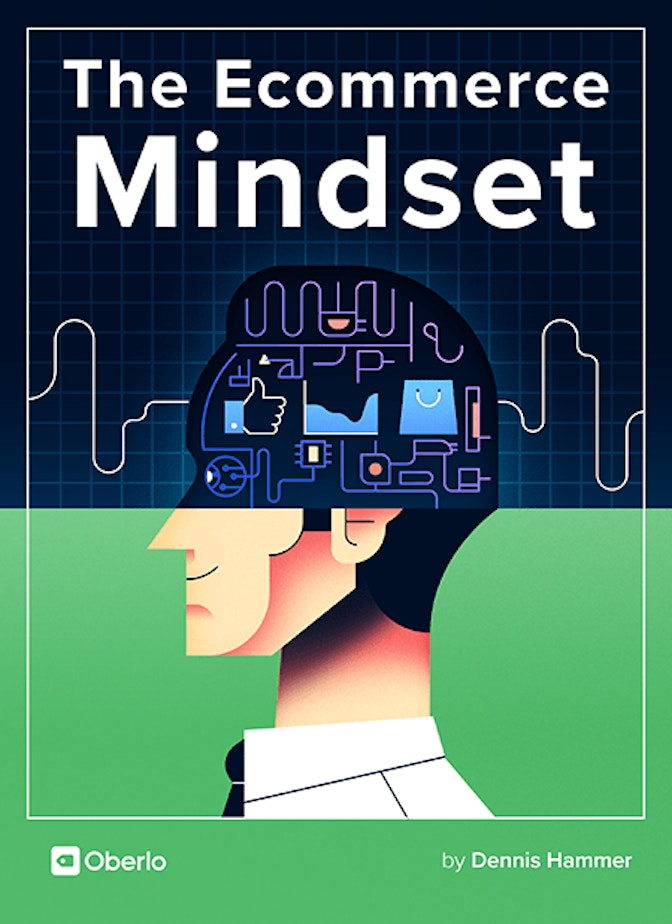Search engine optimization (SEO) is awesome. It’s added considerable predictability and stability to the web, making it easier for online entrepreneurs like yourself to build a website people can actually find.
In fact, anyone who makes money on the web needs at least a conceptual understanding of SEO. Even if you don’t plan to invest heavily in SEO, it helps to have some knowledge of the discipline.
If you don’t know anything about SEO, here’s a quick primer from Moz, a leading expert in SEO:
Search engine optimization (SEO) is the practice of increasing the quantity and quality of traffic to your website through organic search engine results.
Basically, SEO entails optimizing your website so it appears at the top of a search results page when searchers input keywords and phrases into a search engine (like Google).
[highlight]Interesting fact: In 2012, 4x times as many people used Google compared to its next competitor (which wasn’t Bing, by the way, but China’s Baidu).[/highlight]

Source: statista.com
So how do you optimize a site for search engines?
This is actually a major question. There are many sitewide, page-specific, and off-site factors you have to consider. Search Engine Land summarizes each factor in this infographic.

Source: searchengineland.com
If you’re new to SEO, it’s imperative you learn as much as possible, even if you’ve already built your ecommerce store.
[highlight]Recommended resource: Moz: The Beginner’s Guide to SEO.[/highlight]
Fortunately, SEO is not as complicated as it used to be.
In the past, several less-than-ethical techniques were available that you could exploit to trick Google into ranking your site higher than it deserved. If you attempt some of these “black hat” techniques nowadays though, you’re likely to wind up with a penalty.
Over time, Google’s algorithm has evolved into a sophisticated thinker that sees through spammy gimmicks, and even several questionable tactics people still use today.
Modern content management systems and ecommerce platforms make SEO simple. For instance, Shopify comes with as much optimization as a platform possibly could.
Let’s look at an example:
It’s best practice to wrap your page title in an <H1> tag so Google understands the page’s subject. Shopify does this automatically. Your Shopify store is also completely responsive and loads extremely fast, two other important factors in Google’s algorithm.
Modern SEO boils down to two main components:
- On-page SEO: Optimizing your site and pages so Google can read them accurately. (Much of this can be done at your website’s template level, like wrapping every page title in an <H1> tag.)
- Off-page SEO: Collecting links back to your site (called backlinks) from other related, reputable websites.
For most businesses, the best way to improve your SERP visibility is to create optimized content pages around keywords and phrases your customer would use to find sites like yours. For instance, if you want to get people who search for “handmade watches” to find your site, you would create pages that use this keyword in key places.
Then, you would score as many links as you could from reputable sites (sites Google trusts, and thus, ranks high). You might send a product to a blogger for a review, with a link to your site. You might write a guest post, or even Help a Reporter Out. (Check out some more ideas to get backlinks here.)
Sounds simple, right?
For most business models, SEO is the golden ticket.
But this isn’t the case for ecommerce…



SEO Won’t Solve All Your Problems
Ecommerce store owner Andrew Youderian learned the hard way that relying on SEO for all your traffic can be a disastrous move.
Andrew was seduced by the ease, reliability, and low cost of SEO. But when a third-party SEO agency created a bunch of spammy, overoptimized links, his ranking tanked, wiping out 80% of his traffic.
→ Click Here to Launch Your Online Business with Shopify
Imagine your business disappearing overnight.
Scary, right?
What Andrew experienced was of course an example of bad SEO.
Good SEO can indeed help you, but it can’t be your only marketing strategy. Besides, SEO is notoriously tricky for ecommerce sites.
Search engines like lots of content so they can “grab” onto a webpage and rank it properly. But you don’t want to put 3,000 words of copy on a category or product page. This would disrupt your user experience. You could create additional pages (like blog posts) around your keywords, but these pages would compete with your product and category pages.
Further, SEO takes time.
You can’t rank a website in a week. Google takes a while to crawl and evaluate your pages. The age of your domain is actually a ranking factor. Many entrepreneurs opt to purchase a domain through Shopify Exchange or Flippa so their site has already aged somewhat in Google’s eyes (and possibly also has good backlinks).
Traffic is another important factor in Google’s algorithm. It’s a bit of a catch-22, but Google favors websites that receive tons of direct and repeat traffic. This makes it hard for new websites to rank, as well as sites struggling to generate enough traffic.
Most importantly, most people don’t begin their shopping experience on a search engine. A BloomReach survey found that only 28% of online shoppers start their product search on Google. Instead, they head straight to Amazon or another retailer’s website (which is why it’s critical for you to build a following around your brand and connect frequently with past customers).
If shoppers do use Google to find a product, they’re more likely to use Google Shopping than the actual web links. This is because Google Shopping shows them actual product photos right on the search results page.

Unlike web links, however, displaying your products on Google Shopping requires a specialized product feed. In other words, it does not rely on your website’s SEO.
What this means is that if you want traffic and sales now (who doesn’t?), you shouldn’t rely solely on SEO. It’s smarter to also build a social media following, create partnerships with other online businesses, and buy PPC ads.



That Said, Don’t Ignore SEO
Think of SEO like a long-term strategy with no immediate payoff–but one that’s definitely worth your attention. It won’t drive sales in the short term, but it will eventually improve your overall exposure.
For instance, every time you create a new page (including your product and category pages), optimize it according to SEO best practices. Any time you work with another business owner or entrepreneur, find a way to get a link back to your website. Make sure every page is responsive, loads quickly, and isn’t clogged with popups and ads.
But whatever you do, don’t rely only on SEO. Let it be one tool in your kit, not your entire strategy.


